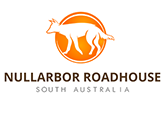The Nullarbor in itself is humbling scenery. A picturesque area composed of deep hues; green trees and brown soil backdropped by the big, blue sky. Driving across the Nullarbor, you will traverse a long road, seemingly endless, growing closer to — with every kilometer — the heavens at the horizon. It’s a surreal experience, a part of the overall adventure.
If this kind of experience sounds exciting to you, then you might be the kind of person who appreciates a beautiful view. May we suggest the Nullarbor’s picturesque clifftop scenery?
The Bunda Cliffs
The Bunda Cliffs, after driving for a long time across the Nullarbor, seems like an abrupt stop; an immediate edge to a world filled with all sorts of pleasant, unexpected surprises: flora and fauna, rich Aboriginal culture, wonderful beaches, and historical caves. A fitting edge to a wonderful world: the Bunda Cliffs is where the Nullarbor plains meets the sea and the sky. It is a 200-kilometer long precipice that curves around The Great Australian Bight — with a limestone base, white as snow. The cliffs can be viewed from several viewing points along the Eyre Highway, east of Eucla and west of us at the Nullarbor Roadhouse.
Watch the Whales
The Bunda Cliffs have one of the most unforgettable views in the entirety of the Nullarbor Plains, if not the entirety of South Australia: a spectacular view of the Pacific Ocean and some of its most astonishing visitors–the Southern Right Whale. Find the perfect spot to listen to these gentle giants sing, and to watch them frolic and do somersaults.
Visit the Head of the Bight between June and October each year to watch up to 100 Southern Right Whales give birth to their calves. It’s a spectacular sight, one right in the backyard of the Nullarbor Roadhouse. The planet is a beautiful place, and what better way to experience that than by witnessing colossal creatures in their native habitat showcasing their free, majestic beauty?
After watching the whales, you can drop by the Point Labatt Conservation park and continue learning about marine life by observing the largest mainland breeding colony of Australian sea lions.
Watching History in the Horizon
Fun fact: the spectacular Bunda cliffs (and the extending Head of the Bight) were in fact, once a part of the sea bed. That’s an interesting idea to ponder on as you gaze at the Bunda cliffs in all its striking glory. Bring your camera too, as you’re going to want to capture a sublime sight millions of years in the making.
The cliffs were formed when Australia separated from Antarctica approximately 65 million years ago. The Bunda cliffs are a rare glimpse at the Nullarbor, and by extension, the world: a chance to look at history in layers.
Some of the layers that form the cliff’s limestone are made up of marine sediments that have fossils of worms, molluscs and other prehistoric creatures embedded in them. The height of the cliffs vary from 60 to 120 meters above sea level, capped by the Nullarbor’s windblown sand laid down between 1.6 million to 100,000 years ago.
Bring your camera, or your pen and notebook — The Bunda Cliffs are a sight that would surely awaken the artist in you, evoke emotions you would most likely want to capture and reminisce with your loved ones back home.
The variety of sights and experience waiting for an adventurer in the Nullarbor is a testament to how beautiful the Earth is. The Nullarbor has a lot to offer to those who know where to look!
The Bunda Cliffs are right in Nullarbor Roadhouse’s backyard. If you want to make the most out of your Outback adventure, contact us. We’ll show you the best parts!


![bunda-cliffs-6[5]](https://nullarborroadhouse.com.au/wp-content/uploads/2014/05/bunda-cliffs-65.jpg)
